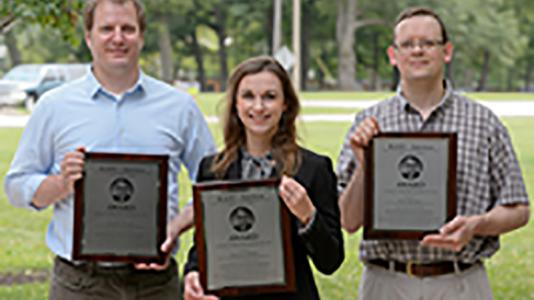
For scientists, the nuances of fuel injection remain shrouded in mystery. Although scientists have a broad picture of how fuel is released within an engine’s combustion chamber, that behavior can vary as an engine’s operating conditions change due to fluctuating temperatures and fuel pressures (among other factors). Argonne scientists are seeking to shed light on this process because understanding these nuances could help engines use fuel more efficiently.
Four Argonne scientists have earned a prestigious award for their pioneering work in this area. In May, the Americas chapter of the Institute for Liquid Atomization and Spray Systems (ILASS) gave its William R. Marshall award for outstanding presentations to Argonne Research Scientist Christopher Powell, Physicist Alan Kastengren, former Postdoctoral Appointee Daniel Duke and Postdoctoral Appointee Katarzyna Matusik.
Powell’s team, along with co-authors from University of Massachusetts-Amherst and General Motors, earned the praise for examining the inner workings of gasoline direct injection and fuel sprays. The team ran new simulations of gasoline direct injection (GDI) nozzle flow and fuel spays and also validated those computational studies with x-ray experiments at the world’s only dedicated fuel-injection beamline at Argonne’s Advanced Photon Source.
The latest award is for the 2016 conference paper “String Flash-Boiling in Flashing and Non-Flashing Gasoline Direct Injection Simulations with Transient Needle Motion.” This is the second time Argonne’s Powell, Kastengren and Duke have earned ILASS’s William R. Marshall award. In 2014, the group was recognized by ILASS for their 2013 paper “Synchrotron X-Ray Measurements of Cavitation.”